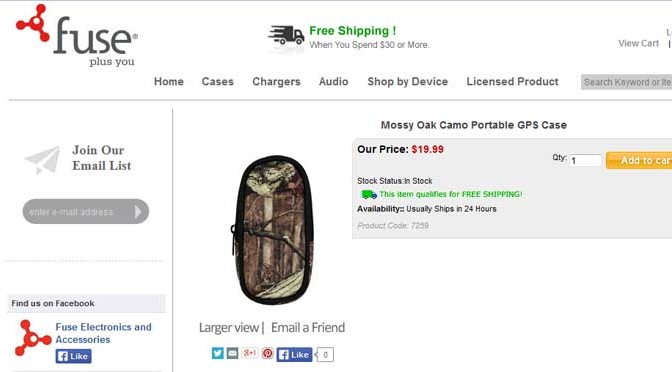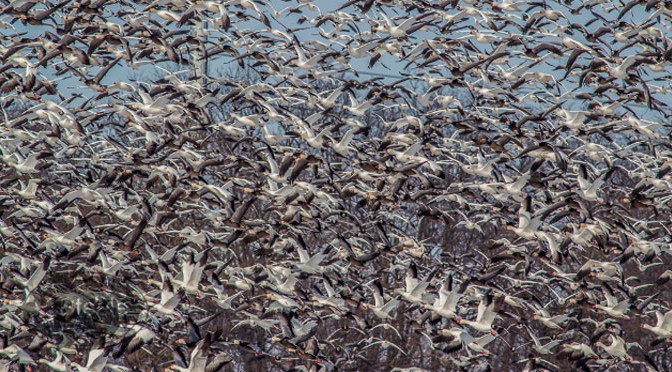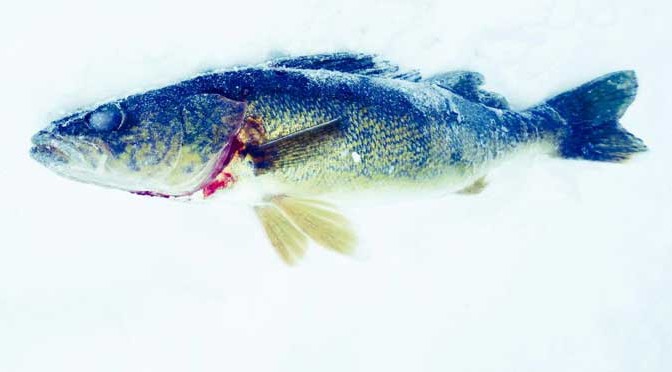Imagine that you could combine your love of archery with your love of fishing. Bowfishing is just that that, archery and angling in one fun package! Bowfishing is the perfect way to keep your archery skills intact and continue enjoying bringing home food for the table between hunting seasons.
 Bowfishing is certainly action packed, and once you master the basic skill of adjusting your aim for the refraction of the water, and learning to see the fish in murky water odds are you will have success on every bowfishing outing. Given the size of the fish usually targeted for bowfishing (carp, gar, drum, rough and/or invasive and injurious fish) it’s a quick and fun way to fill the freezer with plenty of fresh fish.
Bowfishing is certainly action packed, and once you master the basic skill of adjusting your aim for the refraction of the water, and learning to see the fish in murky water odds are you will have success on every bowfishing outing. Given the size of the fish usually targeted for bowfishing (carp, gar, drum, rough and/or invasive and injurious fish) it’s a quick and fun way to fill the freezer with plenty of fresh fish.
 Since bowfishing requires being able to visualize the fish – the phrase “fish are up” means that gar are lazily floating along like giant logs on the surface – carp are in the grassy or brushy shallow with fins and backs sticking out of the water, other carp can be seen hanging just below the surface, large mouths working and making small ring like ripples.
Since bowfishing requires being able to visualize the fish – the phrase “fish are up” means that gar are lazily floating along like giant logs on the surface – carp are in the grassy or brushy shallow with fins and backs sticking out of the water, other carp can be seen hanging just below the surface, large mouths working and making small ring like ripples.
Equipment needed:
 When shopping for a bowfishing bow remember that unlike hunting, a heavy draw weight is not needed. Anything from a 15 pound draw weight up will work. I’ve found that for me a good draw weight is 30 pounds, but I’ve seen wee ones routinely take fish with tiny little bows that have draw weights as low as 15 pounds. Unlike hunting, bowfishing is an up close and personal shot – in the 3- 15 yard range. Recurves work just as well as compounds. Whether you choose a recurve, a compound or a lever bow – is purely personal preference. Many bowfishers prefer recurves because bowfishing is primarily a snapshot instinctive style of shooting and a recurve allows you to make quick shots at any point in the draw cycle. It is important to remember that on a good day of bowfishing you may take dozens or even hundreds of shots, so it may be more comfortable to have a lighter draw-weight bow, and lighter weight bow in general.. Once you’ve decided on a bow, if it’s an old hunting bow or a second hand bow you’ve picked up somewhere strip it down. Sights are pretty much useless when bowfishng, all the goodies that you can’t live without on your hunting set up are just either useless or an annoyance when bowfishing. All you really need is the bow, an arrow rest, and a reel.
When shopping for a bowfishing bow remember that unlike hunting, a heavy draw weight is not needed. Anything from a 15 pound draw weight up will work. I’ve found that for me a good draw weight is 30 pounds, but I’ve seen wee ones routinely take fish with tiny little bows that have draw weights as low as 15 pounds. Unlike hunting, bowfishing is an up close and personal shot – in the 3- 15 yard range. Recurves work just as well as compounds. Whether you choose a recurve, a compound or a lever bow – is purely personal preference. Many bowfishers prefer recurves because bowfishing is primarily a snapshot instinctive style of shooting and a recurve allows you to make quick shots at any point in the draw cycle. It is important to remember that on a good day of bowfishing you may take dozens or even hundreds of shots, so it may be more comfortable to have a lighter draw-weight bow, and lighter weight bow in general.. Once you’ve decided on a bow, if it’s an old hunting bow or a second hand bow you’ve picked up somewhere strip it down. Sights are pretty much useless when bowfishng, all the goodies that you can’t live without on your hunting set up are just either useless or an annoyance when bowfishing. All you really need is the bow, an arrow rest, and a reel.
 Of course you will need arrows as well, and I cannot stress enough that you must use a bowfishing arrow. DO NOT – I repeat DO NOT even considering tying some string onto a hunting arrow and winging a broadhead at a fish. It doesn’t work, and it’s extremely unsafe. Bowfishing arrows are available in many different designs, with points geared toward different species such as carp and gar. Backwater Outdoors a leading bowfishing retailer offers a multitude of arrow and point selections as well as arrows put together and ready to shoot. The most inexpensive and basic fiberglass arrow with a general purpose carp point is excellent for beginners and one ready to attach, complete with the safety slide can be found there for under 15 dollars.
Of course you will need arrows as well, and I cannot stress enough that you must use a bowfishing arrow. DO NOT – I repeat DO NOT even considering tying some string onto a hunting arrow and winging a broadhead at a fish. It doesn’t work, and it’s extremely unsafe. Bowfishing arrows are available in many different designs, with points geared toward different species such as carp and gar. Backwater Outdoors a leading bowfishing retailer offers a multitude of arrow and point selections as well as arrows put together and ready to shoot. The most inexpensive and basic fiberglass arrow with a general purpose carp point is excellent for beginners and one ready to attach, complete with the safety slide can be found there for under 15 dollars.
 The need for a safety slide is simple – shooting an arrow that’s tied to your bow is a somewhat risky activity. In most cases, the sings out, discharges freely and all is well. However, if your line snags on any little thing during the shot, it could cause the arrow to reverse directions, coming back at you. This is known as “snap back” and is most often a result of line becoming entangled on something rearward of your bow grip—bowstring or cables, arrow rest, your wristwatch, weeds, brush, and so forth.
The need for a safety slide is simple – shooting an arrow that’s tied to your bow is a somewhat risky activity. In most cases, the sings out, discharges freely and all is well. However, if your line snags on any little thing during the shot, it could cause the arrow to reverse directions, coming back at you. This is known as “snap back” and is most often a result of line becoming entangled on something rearward of your bow grip—bowstring or cables, arrow rest, your wristwatch, weeds, brush, and so forth.
I highly recommend outfitting every bowfishing arrow you use with AMS Safety Slides, the safety slides keep the line in front of the bow prior to the shot, but allow it to slide to the back of the arrow upon release.
An additional safety note – it is generally a poor practice to simply tie off the string to a belt loop, a part of the bow, or any other manner other than a reel set up. I can guarantee that if that arrow is attached to belt loop and you shoot one of the carp that easily weigh in at 30, 40, 50 pounds you are likely going to be in the water with the fish.
 This is what makes having a reel another essential part of your bowfishing set up. Reels come in three basic types; drum reels for hand retrieving, heavy duty spin casting reels and bottle style reels. Drum reels are the most basic and inexpensive option. They are simple to use, darn near foolproof, and consist of line wrapped around a spool. They screw into the stabilizer of your bow or can be taped on, if the bow will not take a stabilizer. The downside of this option is that it requires you to hand wrap the line in order to reel it in. This can be time consuming, and if you are routinely shoot large heavy fish hard on one’s hands. If you are a bowfisher who shoots up to hundreds of times per outing, it’s also very tiring and will quickly lose its charm. That said, drum reels a great choice works great for beginners looking to test the waters of bowfishing without making a large dollar commitment.
This is what makes having a reel another essential part of your bowfishing set up. Reels come in three basic types; drum reels for hand retrieving, heavy duty spin casting reels and bottle style reels. Drum reels are the most basic and inexpensive option. They are simple to use, darn near foolproof, and consist of line wrapped around a spool. They screw into the stabilizer of your bow or can be taped on, if the bow will not take a stabilizer. The downside of this option is that it requires you to hand wrap the line in order to reel it in. This can be time consuming, and if you are routinely shoot large heavy fish hard on one’s hands. If you are a bowfisher who shoots up to hundreds of times per outing, it’s also very tiring and will quickly lose its charm. That said, drum reels a great choice works great for beginners looking to test the waters of bowfishing without making a large dollar commitment.
A second option is the spin casting reel. These work just like regular button fishing reels and are spooled with bowfishing line. These reels have the fastest retrieval of all three options. BUT if you forget to press the release button before your shot, the arrow will break the line and potentially cause damage to the reel. It didn’t long for me to retire the spin casting reel I tried – I just found that I could not consistently remember to “push the button dumbass” and ended up missing too many shots. However many bowfishermen prefer the speed at which a spin casting reel retrieves and swear by them. The other option, and my personal favorite is the bottle reel. These reels are the most expensive option, but they are very durable and very effective. The line reels up into a bottle mounted where the sight would normally be on your bow. These are the most popular reels used by tournament bowfishermen.
Now that we’ve covered the bow set up a few other items are must haves as well. Polarized lenses are absolutely essential during daylight hours to decrease glare, along with a hat with a brim or bill to again help with lighting issues.
Because bowfishing regulations vary so greatly, as do the species that are legally allowable for bowfishing; before you ever make your first bowfishing excursion be sure to review all regulations and licensing requirements.
The Bowfishing Association of America website holds a wealth of information regarding bowfishing and is well worth a visit and bookmark.
In my next post we’ll look at how to find the fish for bowfishing and the skills need to hit the fish and make the arrow dance!
~
Thanks for reading! If you enjoyed this post please share it with the world!
Don’t forget you can read more articles from Gretchen Steele’s blog “Wild Woman’s Wanderings” here and don’t forget to like us on Facebook.
If you’d like to get immediate email notifications when a new article, contest or show is posted; enter your email address in the sign up box on the left.
Discover more from The HuntFishTravel Show
Subscribe to get the latest posts sent to your email.




Good article, and I’m glad you mentioned something about the AMS safety slide. If you or anyone else is interested in learning more about the basics of bowfishing you can check out the link below.
https://www.foundry35.com/blogs/blog/basics-of-bowfishing-everything-youll-need-to-get-started-1
Thank you for posting this . I just started a small bow fishing charter business part time and was searching relevant articles to help my friends and clients. If you haven’t written one on tips to hit more fish You should. Thank you again for the great content. You can check me out here.
New Orleans Bowfishing
Hi Jarret, thanks for the comment and great suggestion!
Looking forward to it